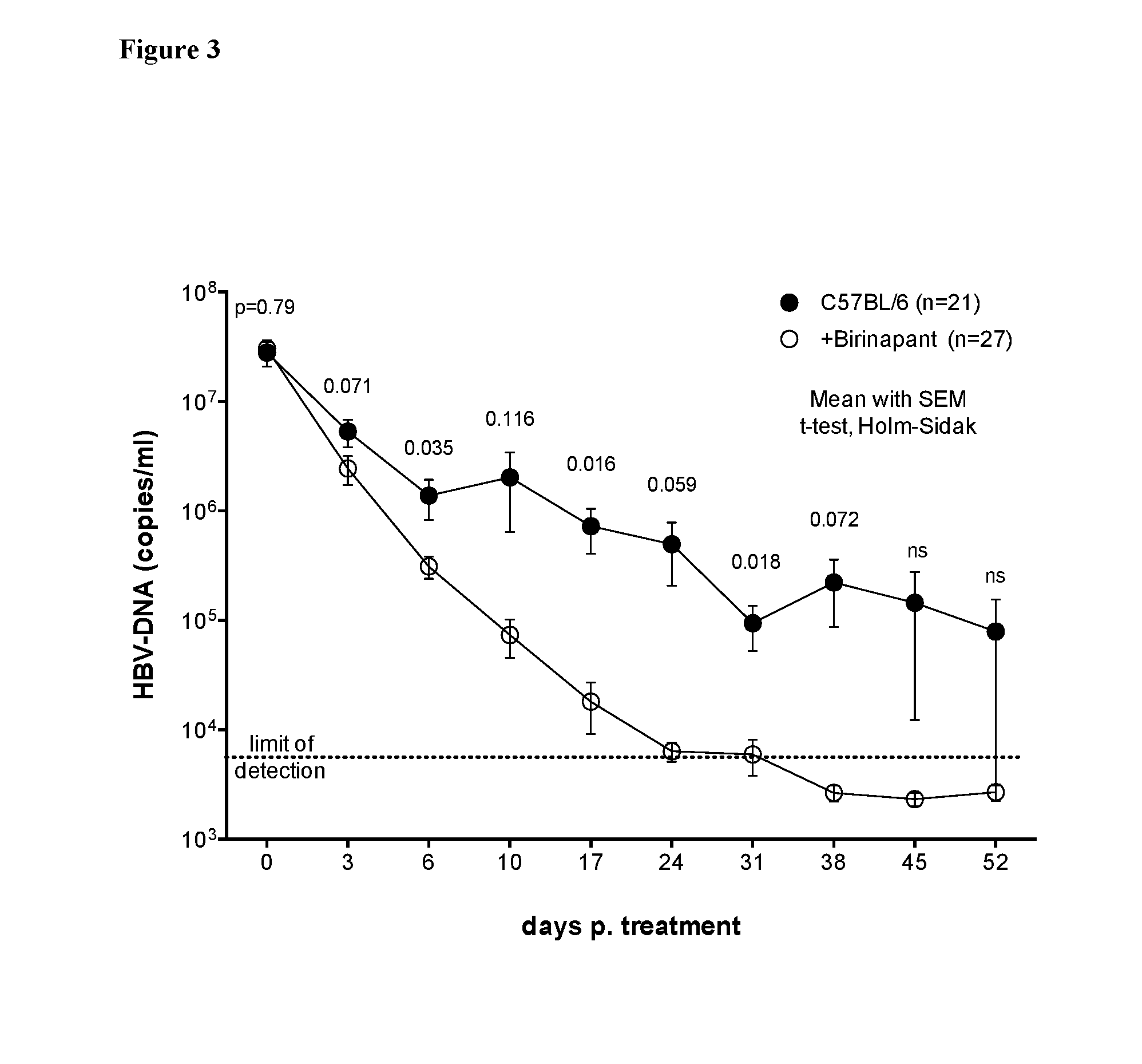Method of Treating Intracellular Infection
a technology of intracellular infection and treatment method, which is applied in the direction of viruses, peptides, drug compositions, etc., can solve the problems of long-term, expensive, and low treatment effect of existing drug regimens, and achieves the effects of low cost, low treatment efficiency, and low cos
- Summary
- Abstract
- Description
- Claims
- Application Information
AI Technical Summary
Benefits of technology
Problems solved by technology
Method used
Image
Examples
example 1
Hepatitis B Infection of Mice
[0143]The present inventors adapted a technique7,8 that can be used to cause HBV infection in mice. Naked plasmid DNA containing greater than genome length HBV1.2 flanked by the inverted terminal repeats of adeno-associated virus is injected hydrodynamically to cause substantial inferior vena caval pressures to force DNA into the liver where it is incorporated into hepatocytes7,8. Importantly, the DNA injected into animals does not contain any adeno-associated viral coding sequences. The plasmid is not encapsulated so there are no viral structural or non-structural proteins in the injected preparation.
[0144]Mice were bled intermittently and their serum was isolated. Qiagen viral DNA extraction kit was used to purify viral DNA. Absolute quantification of HBV genome was achieved by RT-PCR, as described previously9.
[0145]Using this technique, C57BL / 6 mice (6-12 weeks old of either gender) were infected with HBV and they expressed surface antigen, core antig...
example 2
Treatment of Mice with Birinapant
[0146]C57BL / 6 mice were infected with HBV and 6 days after infection were treated with weekly doses of birinapnat (30 mg / kg administered intraperitoneally) or vehicle control (DMSO) for a total of 3 weeks (3 doses).
[0147]Six days post-HBV infection, mice were treated with birinapant or vehicle control. After a three doses of birinapant, HBV viral load was reduced by 2 logs compared to viral loads in mice treated with vehicle control. All birinapant-treated, HBV-infected mice had no detectable HBV DNA in their serum 39 days after the first dose of birinapant. On average, mice treated with vehicle control still had approximately 106 copies of HBV DNA in their serum at this time point (see FIG. 3). It was found that 3 doses of birinapant had equivalent efficacy as 6 doses of birinapant in promoting HBV clearance. Birinapant treatment achieved HBV clearance as early as 10 days after the first treatment dose (see FIG. 4).
example 3
Genetic Targeting of cIAP1 and cIAP2 recapitulated the HBV clearance kinetics seen with birinapant treatment.
[0148]Gene targeted mice, which had a deficiency of cIAP1 (liver-specific deficiency) together with a deficiency of cIAP2 in all tissues, were able to clear HBV infection with similar kinetics to mice treated with birinapant (see FIG. 5).
PUM
| Property | Measurement | Unit |
|---|---|---|
| TNF-α | aaaaa | aaaaa |
| resistance | aaaaa | aaaaa |
| time | aaaaa | aaaaa |
Abstract
Description
Claims
Application Information
 Login to View More
Login to View More - R&D
- Intellectual Property
- Life Sciences
- Materials
- Tech Scout
- Unparalleled Data Quality
- Higher Quality Content
- 60% Fewer Hallucinations
Browse by: Latest US Patents, China's latest patents, Technical Efficacy Thesaurus, Application Domain, Technology Topic, Popular Technical Reports.
© 2025 PatSnap. All rights reserved.Legal|Privacy policy|Modern Slavery Act Transparency Statement|Sitemap|About US| Contact US: help@patsnap.com



